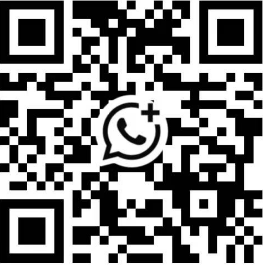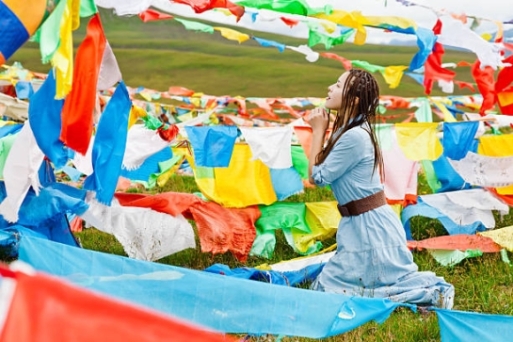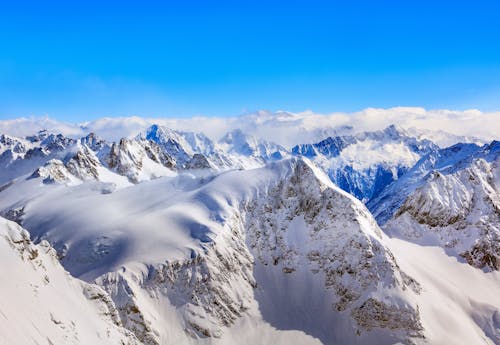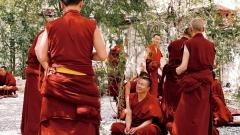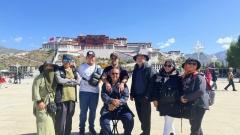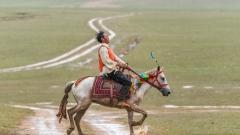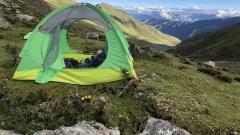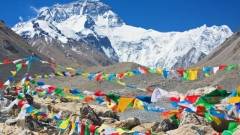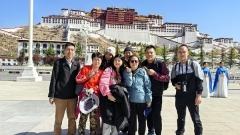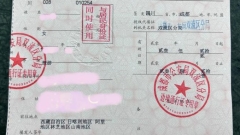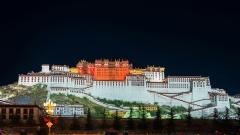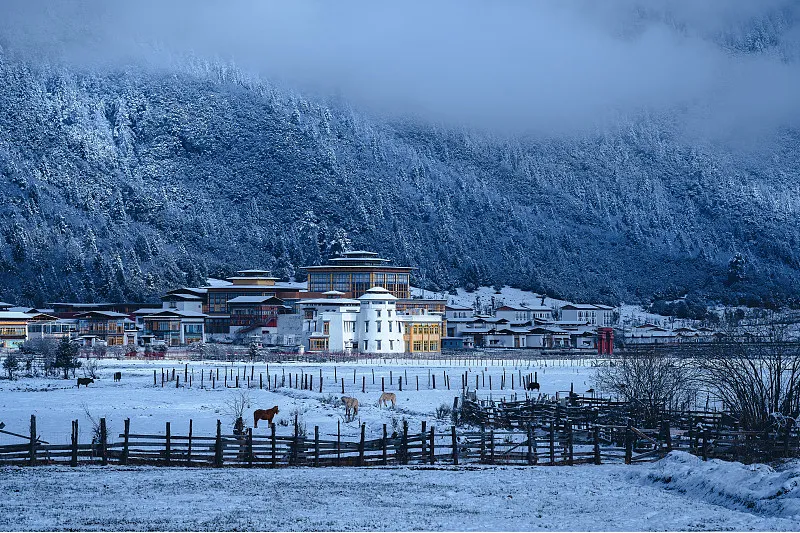Tibet may be known for its vast, snow-capped plateaus and high-altitude treks, but February brings a different side of this mystical land—a quieter, clearer, and more spiritual atmosphere, far from the bustling tourist crowds. Despite the chill in the air, February offers rewarding travel experiences for those who come prepared.
Whether you’re drawn to Tibetan culture, interested in seeing the region’s winter landscapes, or hoping to experience the Tibetan New Year (Losar), this guide will help you understand Tibet’s weather in February, what to pack, where to go, and how to make the most of your journey.
What Is the Weather Like in Tibet in February?
February is still very much winter in Tibet, but it’s slightly less harsh than January. While the cold persists—especially at night—days are dry and mostly sunny. Thanks to Tibet’s high elevation and thin atmosphere, sunlight is intense, which can make daytime outings feel surprisingly comfortable.
| estination | Daytime Average Temperature (°F/°C) | Nighttime Average Temperature (°F/°C) | Average Snowfall (inches/mm) | Average Clear Days |
|---|---|---|---|---|
| Lhasa | 47°F (8°C) – 54°F (12°C) | 22°F (-6°C) – 30°F (-1°C) | 0.6 inches (15 mm) | 21 |
| Shigatse | 41°F (5°C) – 48°F (9°C) | 15°F (-9°C) – 23°F (-5°C) | 0.3 inches (8 mm) | 20 |
| EBC | 32°F (0°C) – 39°F (4°C) | 6°F (-14°C) – 14°F (-10°C) | 1.5 inches (38 mm) | 11 |
| Nyingchi | 50°F (10°C) – 57°F (14°C) | 34°F (1°C) – 40°F (4°C) | 0.7 inches (18 mm) | 18 |
| Namtso Lake | 34°F (1°C) – 41°F (5°C) | 12°F (-11°C) – 19°F (-7°C) | 1.2 inches (30 mm) | 19 |
| Mount Kailash | 21°F (-6°C) – 28°F (-2°C) | 2°F (-17°C) – 10°F (-12°C) | 2.6 inches (66 mm) | 14 |
Typical Weather Conditions:
-
Daytime highs: 5°C to 10°C (41°F to 50°F)
-
Nighttime lows: -12°C to -5°C (10°F to 23°F)
-
Precipitation: Minimal (February is part of the dry season)
-
Sunshine: Abundant, with up to 8 hours of sunlight daily
-
Humidity: Very low, resulting in dry skin and chapped lips if not properly protected
The high UV exposure in Tibet makes sun protection a must—even in the middle of winter. Despite the cold, you may feel warm in the sun during the day. However, temperatures plummet once the sun sets, so layers are essential.
Climate and Travel Suitability of Major Tourist Areas in Tibet in February
Though February is still winter in Tibet, many major destinations remain accessible and worth visiting with the right preparation.
Lhasa (3,650m)
Lhasa has the mildest winter climate in Tibet. Daytime temperatures range from 7°C to 10°C, with nights dropping to -8°C to -4°C. Sunny and dry, it’s ideal for sightseeing. Major sites like the Potala Palace and Jokhang Temple remain open, and the Tibetan New Year (Losar) creates a festive, cultural atmosphere.
Shigatse (3,800m)
Colder than Lhasa, Shigatse sees daytime highs of 5°C to 8°C and lows of -12°C to -6°C. Roads are generally clear, and key attractions like Tashilhunpo Monastery are accessible. The city is quiet in winter, making it a peaceful stop with fewer tourists.
Nyingchi (3,000m)
With daytime highs of 8°C to 12°C and lows of -2°C to -6°C, Nyingchi offers a milder, more humid climate. Often called the “Switzerland of Tibet,” it features snow-dusted forests and scenic spots like Basum Tso. Lower altitude and easier access make it ideal for first-time visitors.
Yamdrok Lake (4,400m)
This sacred lake is often partially frozen in February. Temperatures hover between 0°C and 5°C during the day, dropping to -15°C or lower at night. While visually stunning, the high elevation and wind make it a cold destination—warm, layered clothing is essential.
Everest Base Camp (5,200m)
Accessible only if weather allows, EBC is bitterly cold, with daytime temps from -5°C to 3°C and nights down to -20°C. The skies are often clear, but travel is only advisable for well-acclimatized, well-equipped travelers—with a guide.
Namtso Lake (4,718m)
Often closed due to snow, Namtso’s extreme weather—highs below 2°C and lows near -18°C—makes it risky in February. Travel here is generally not recommended unless conditions are confirmed safe.
Recommended Tibet Trips:
8-Day Classic Tibet Tour: Lhasa, Everest, Namtso & More>>
11-Day Classic Panorama Tibet Tour: Lhasa, Everest, Nyingchi & More>>
What to Pack for Tibet in February
Traveling to Tibet in winter requires careful preparation. Although the days may be sunny, the cold—especially at night—can be intense.
Clothing:
-
Thermal base layers
-
Insulated jacket (down or synthetic)
-
Windproof outer shell
-
Warm gloves, wool hat, scarf
-
Wool socks and sturdy, waterproof boots
-
Sunglasses with UV protection
-
Face mask or buff (for dry wind and dust)
Essentials:
-
High-SPF sunscreen
-
Lip balm and skin moisturizer
-
Altitude sickness medication (consult a doctor beforehand)
-
Reusable water bottle
-
Snacks or instant noodles (for remote areas with limited food options)
-
Portable charger and extra batteries (cold drains battery life faster)
Layering is key. You’ll want to stay warm during early mornings and evenings but be able to shed layers as temperatures rise during sunny afternoons.
Tibet Travel Permits in February
All foreign travelers must secure a Tibet Travel Permit, regardless of the season. You cannot enter Tibet without it, and it must be arranged through a certified travel agency.
Key Tips:
-
Apply for the permit at least 15-20 days before your trip
-
You’ll need a pre-arranged itinerary
-
The permit is required to book flights or trains into Tibet
-
Independent travel is not allowed—you must be on a guided tour
Winter sees fewer applicants, so processing is generally faster and less stressful than in the peak season.
Practical Tips for Traveling in February
Stay in Lhasa for a few days first: Let your body adjust to the altitude before heading to higher elevations.
Hydrate constantly: High altitudes and dry air make dehydration more likely—even when it’s cold.
Check road conditions regularly: Snow can temporarily block roads to destinations like EBC and Namtso.
Travel with a local guide: Your guide will help with logistics, language barriers, and cultural insights—especially important during winter.
Embrace the slow pace: With fewer distractions and more solitude, this is the perfect time to reflect, observe, and absorb Tibetan culture at its own rhythm.
Experience the Tibetan New Year (Losar)
One of the highlights of visiting Tibet in February is the chance to witness Losar, the Tibetan New Year. This festival usually falls between late January and early March, depending on the lunar calendar.
During Losar:
-
Temples are adorned with offerings and decorations
-
Locals dress in traditional attire
-
Prayer ceremonies, dances, and family gatherings take center stage
It’s a rare opportunity to see Tibetan culture in its most vibrant and spiritual form.
Conclusion: Is February a Good Time to Visit Tibet?
Absolutely—if you’re prepared. Tibet in February offers breathtaking landscapes, peaceful cities, deep cultural experiences, and affordability. While the cold weather requires planning, the rewards are immense: stunning mountain views, intimate cultural encounters, and a side of Tibet most tourists never get to see.
If you’re an off-the-beaten-path traveler, a winter enthusiast, or someone seeking a spiritual retreat, February could be the perfect time for your Tibetan journey.


